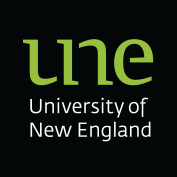Full description
Data collected at Gatton, Southeast Queensland, the impact of forage legume biomass management (retained vs. cut and removed) on inputs of fixed N, soil N and subsequent maize yield were assessed for an irrigated field experiment. Available soil mineral N following tropical forage legumes lablab (Lablab purpureus), centro (Centrosema pascuorum), butterfly pea (Clitoria ternatea) and burgundy bean (Macroptilium bracteatum) and grain legume soybean (Glycine max) were compared with maize (Zea mays) when legume biomass was retained or cut and removed. After these legumes, a subsequent bioassay of an oat (Avena sativa) cover crop and a maize grain crop were grown and N uptake, biomass production and grain yield were compared among tropical legumes and the maize control. To determine N fertiliser equivalence values for subsequent maize crop yields different rates of fertiliser (0, 50, 100 and 150 kg urea-N/ha) were applied. Data for West Timor, Indonesia used simulations and participatory methods to assess the potential impact of forage legumes on smallholder farmers. Farming systems model APSIM was used to assess the potential impact of retaining or removing forage legumes on subsequent maize yield. Whole farm model the Integrated Analysis Tool then used the outputs from APSIM simulations to simulate the production and economic impacts of forage legumes on smallholder farmers. Finally, participatory on-farm assessment in 6 villages in West Timor elucidated farmers perceptions of the potential impacts of forage legumes on their farms and households. This included separate men’s and women’s focus groups assessing the benefits and constraints of forage legumes for smallholder farmersData time period: 10 2013 to 31 01 2017
text: Gatton, AU (Australia/Brisbane)
dcmiPoint: name=Gatton, AU (Australia/Brisbane); east=152.27618; north=-27.55873; projection=WGS84
text: West Timor, Indonesia
Subjects
Agricultural and Veterinary Sciences |
Agriculture, Land and Farm Management |
Expanding Knowledge |
Expanding Knowledge |
Expanding Knowledge in the Agricultural and Veterinary Sciences |
Farming Systems Research |
Farming systems |
Gender |
Indonesia |
Legume |
Simulation |
Smallholder |
Strategic basic research |
User Contributed Tags
Login to tag this record with meaningful keywords to make it easier to discover
Identifiers
- Handle : 1959.11/23455

- Local : une:1959.11/23455


